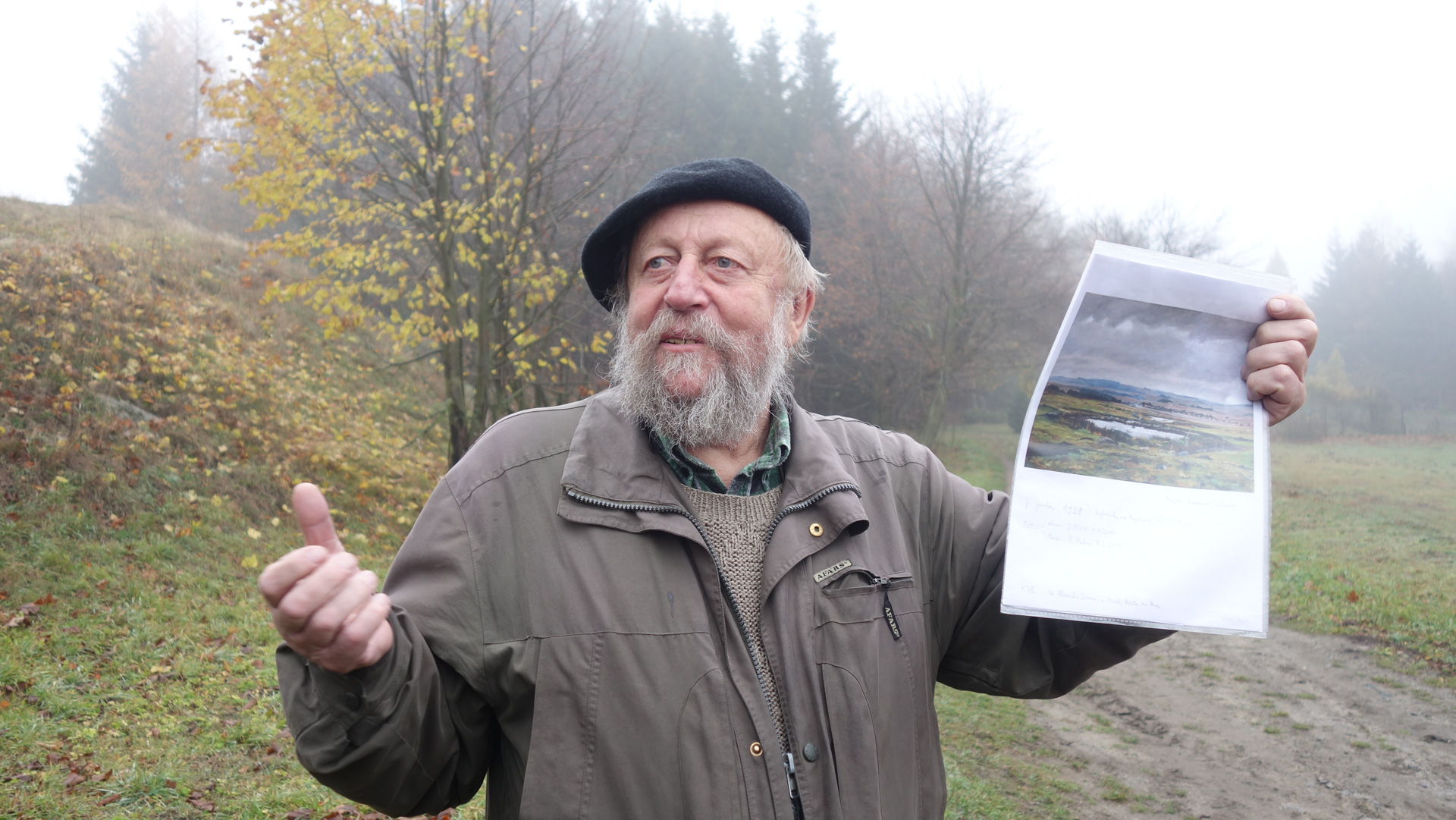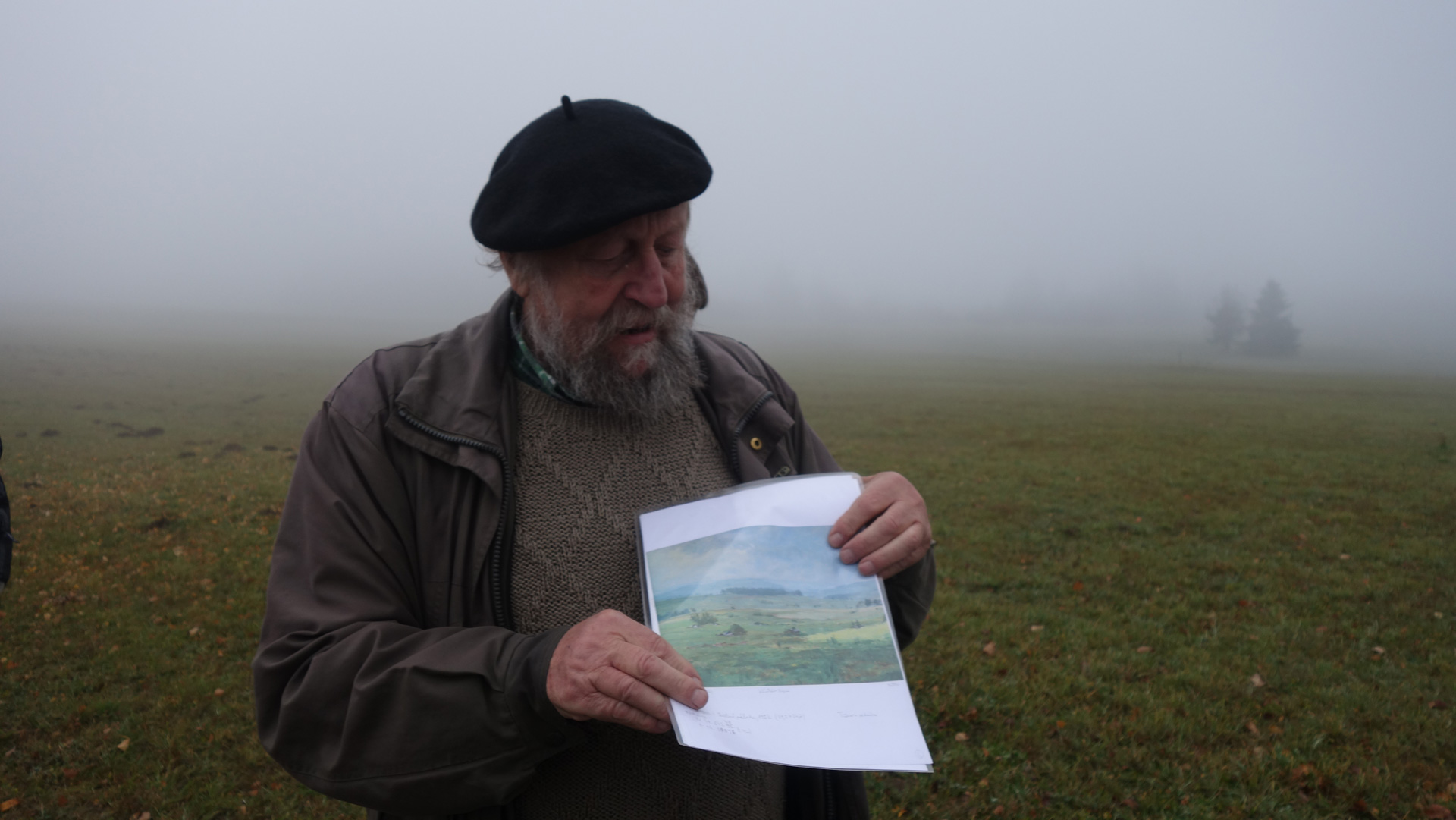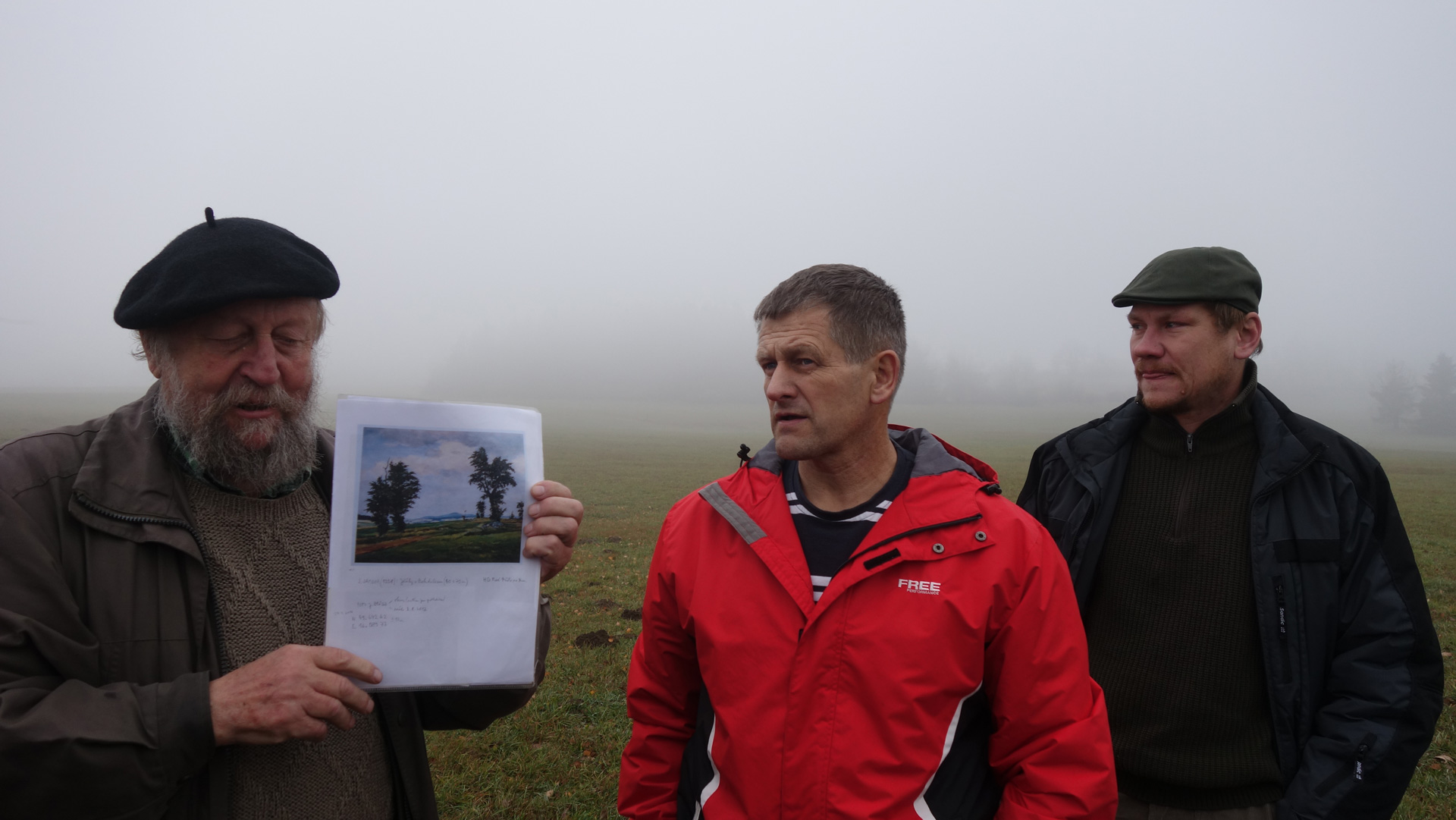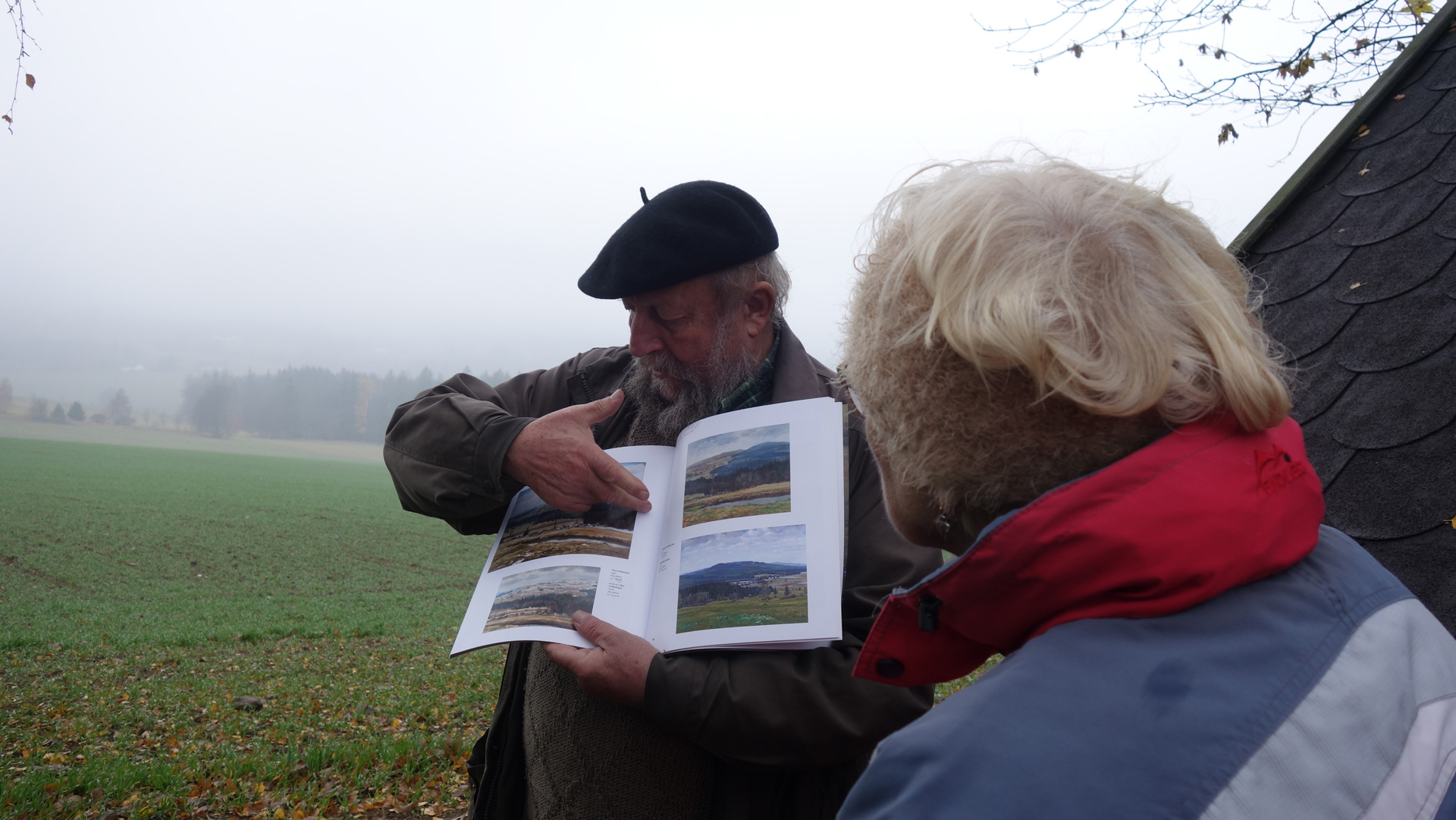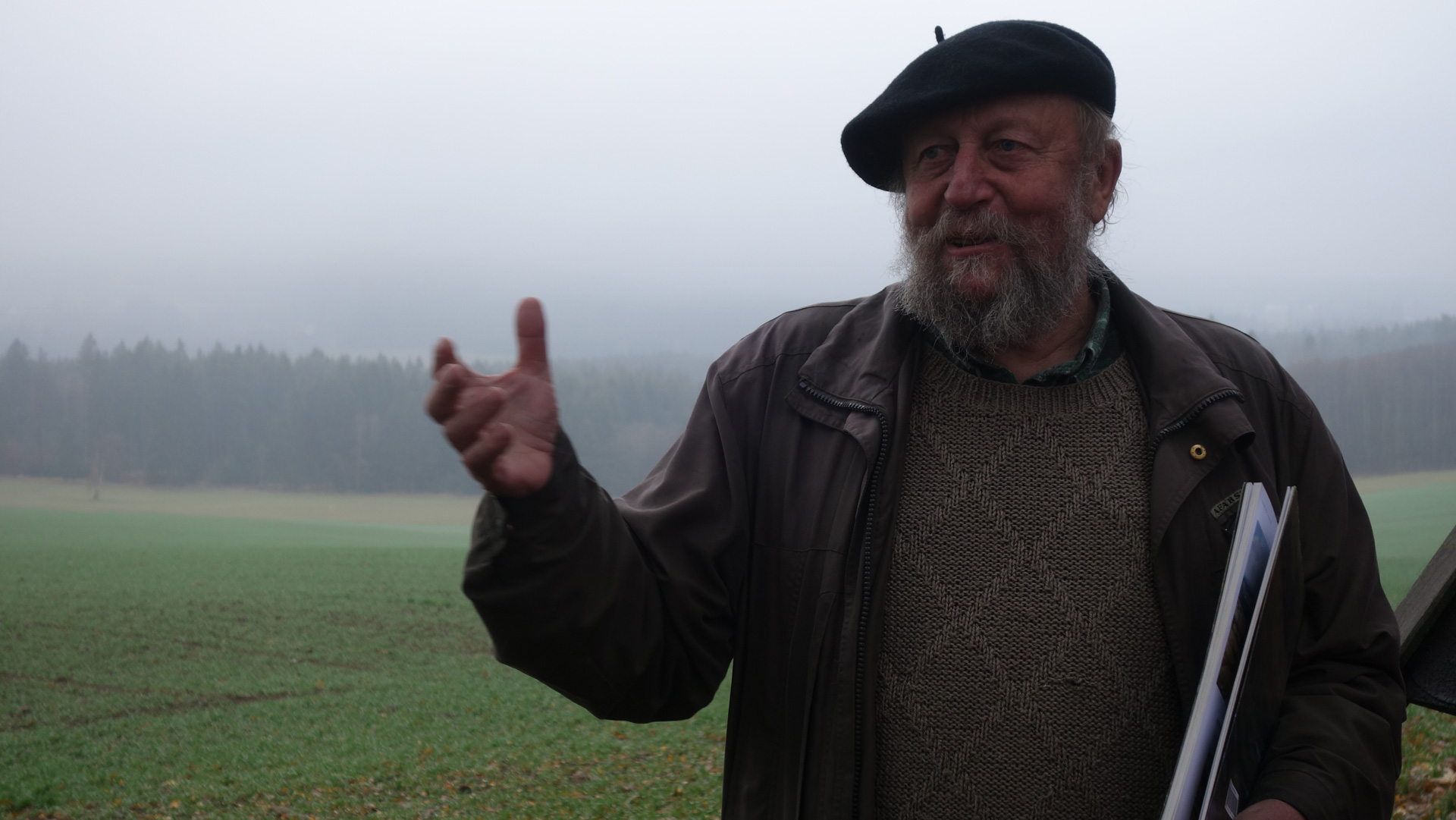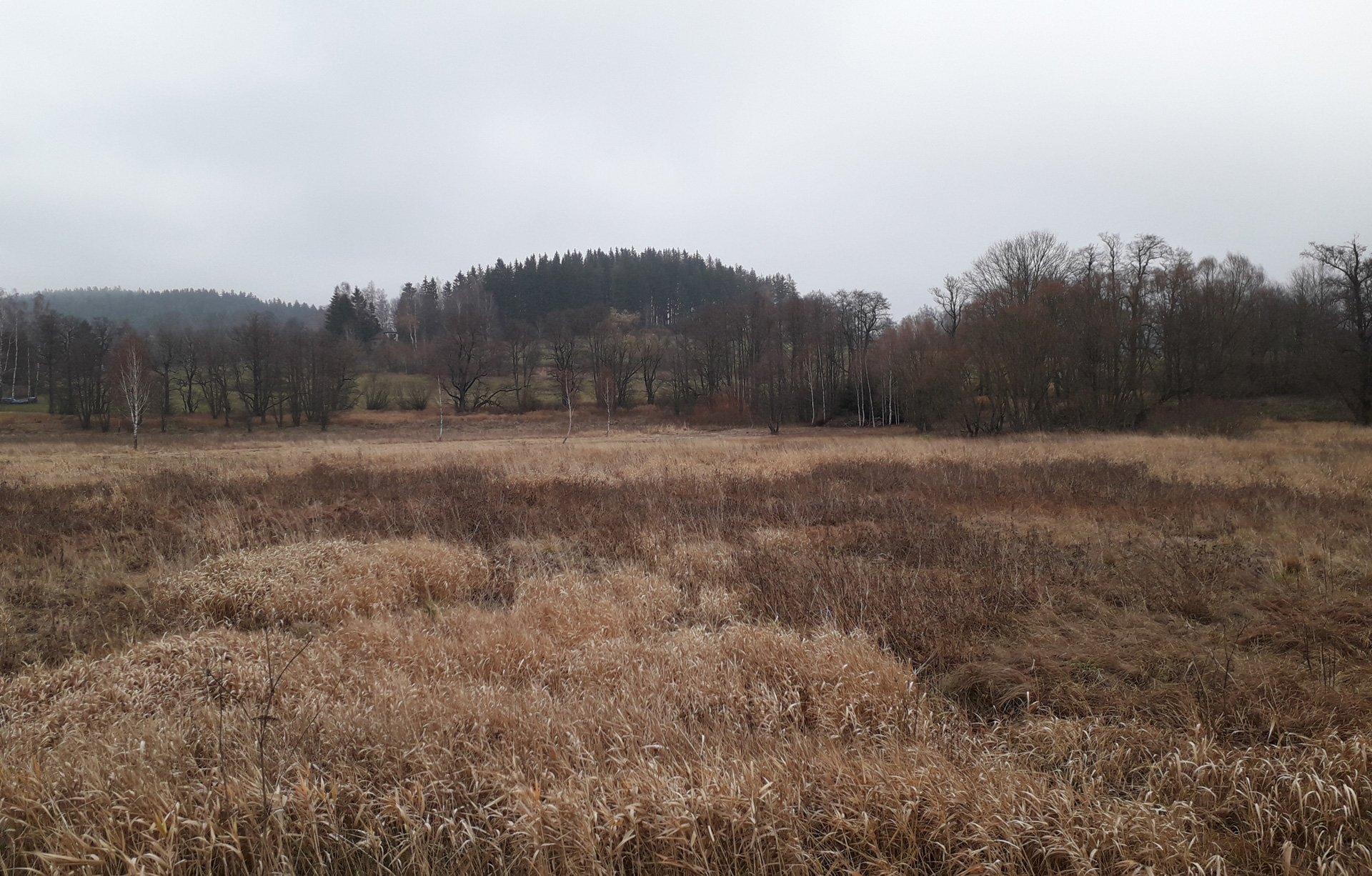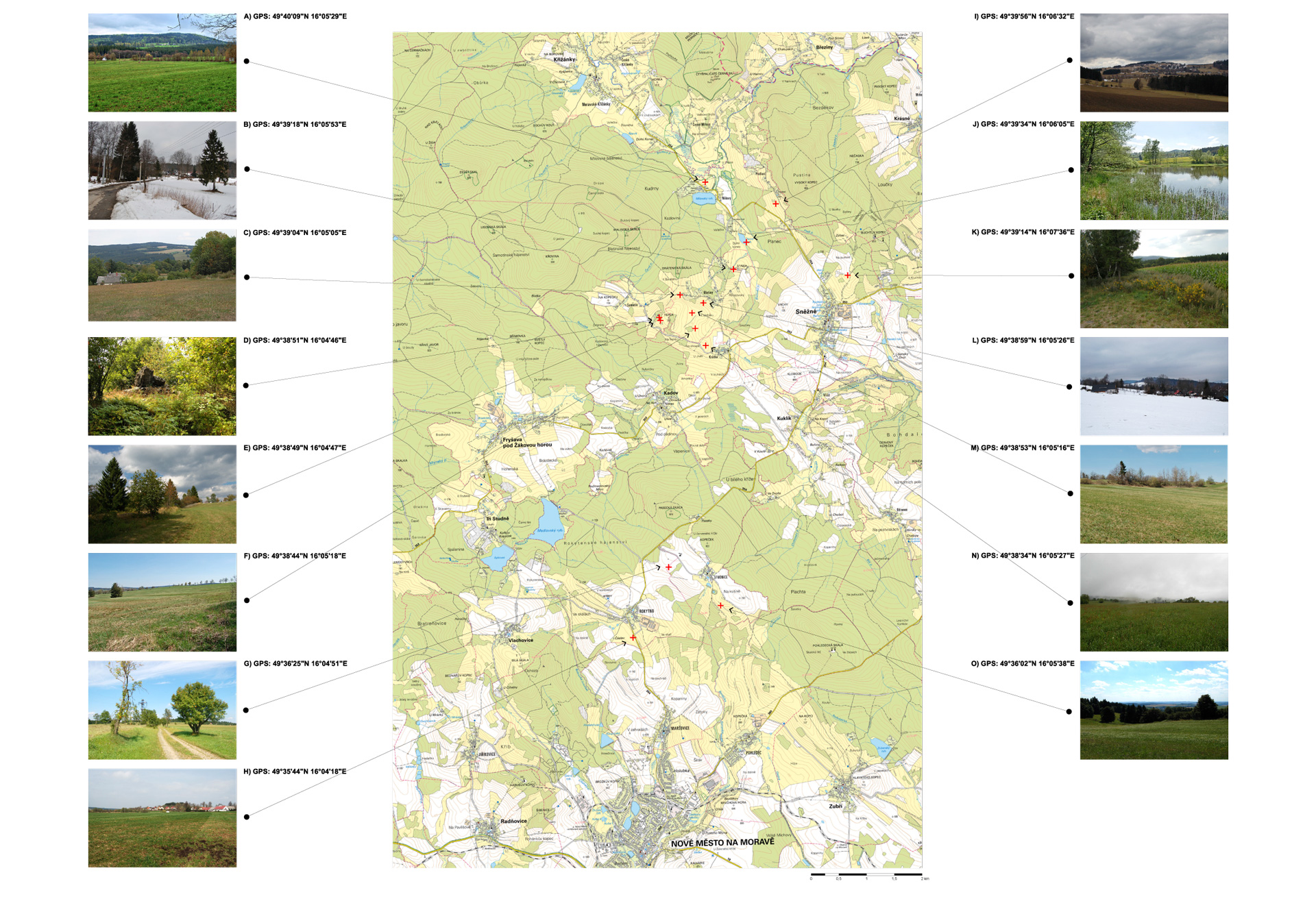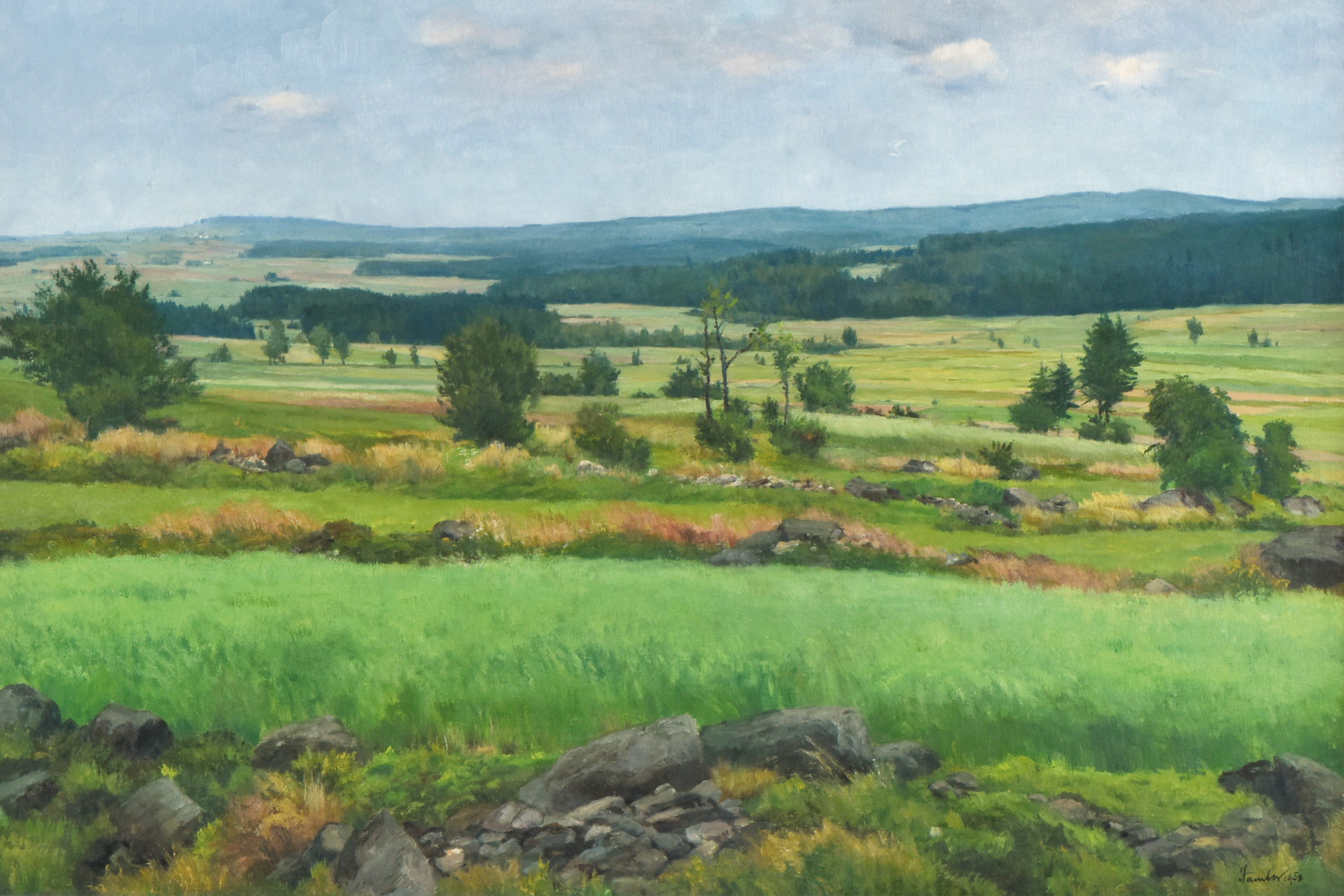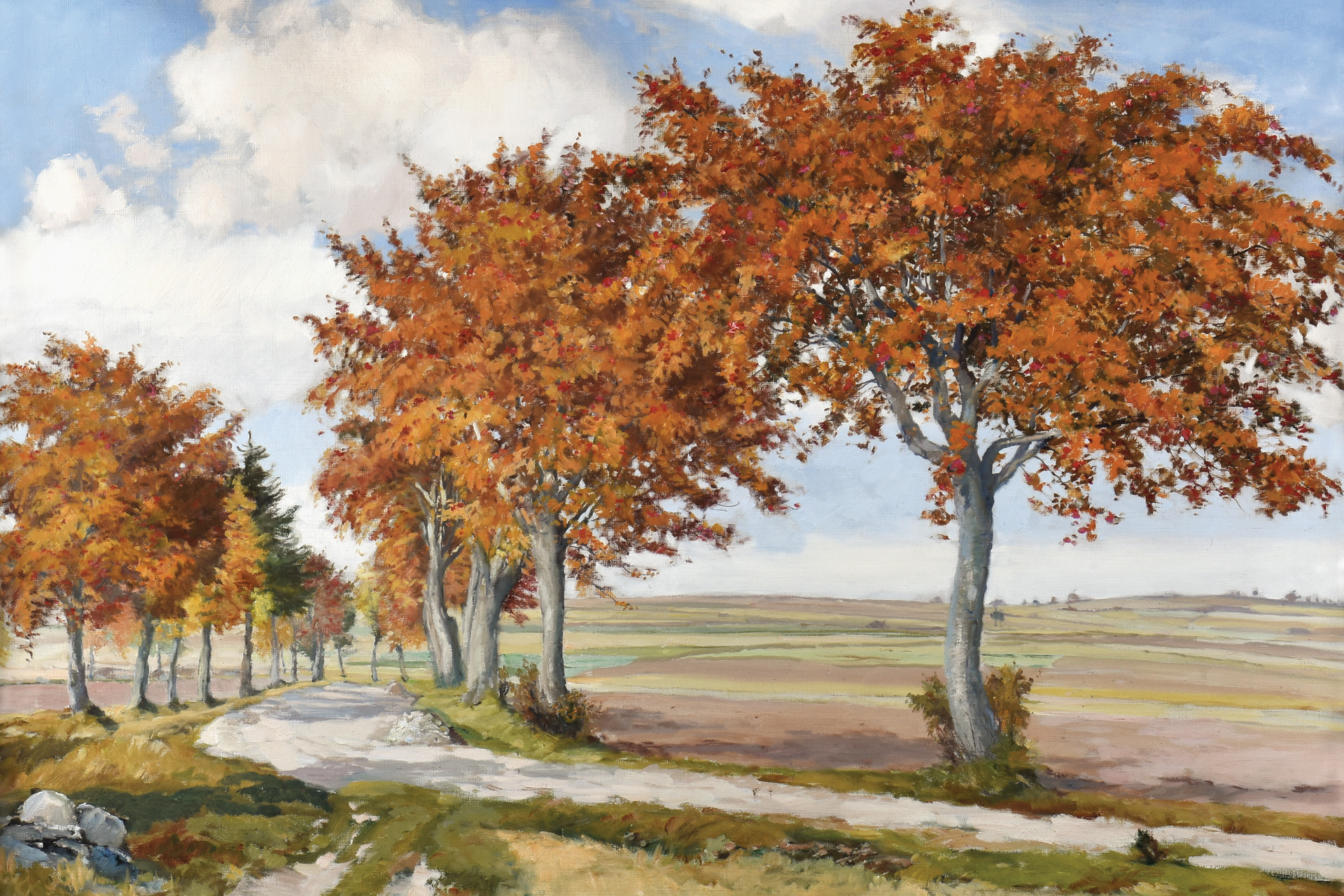History of the Jambor House No. 475 in Tišnov
Marta Sylvestrová and Michal Konečný

Šafaříkova (today Brněnská Street) on a postcard from 1913 with the house and adjacent barn (today's Jambor House) of Josef Chlup, No. 8. Archive of Tišnov Municipal Office | Photo of Jambor House with the Bookstore of V. Rašková and Josef Jambor Gallery on the first floor, photo Andrea Bratrů Velnerová
House No. 475 in Tišnov, called the Jambor House following reconstruction in 1996 after the painter Josef Jambor who lived and worked there for 33 years, is situated on Tišnov’s main street between house No. 7 and the now demolished No. 8. It was inserted in a row of original Tišnov homesteads at the beginning of the last century. The first records of the building date from 1913, when the original barn which was part of a farm at No. 8, Brněnská St. (in the inter-war period called. Šafaříkova St.) was converted by Tišnov citizen Josef Chlup, a blacksmith, into a warehouse. Shortly afterwards, in 1920, he adapted it for his daughter Božena as a small shop, where she ran a fashion salon. In 1931, Božena Chlupová married the painter Josef Jambor, who moved to Tišnov from Nové Město na Moravě to live with her. The husband and wife – Josef and Božena – had the house rebuilt for the first time in 1939 to the design of architect Vratislav Vrzal. The construction work, which raised and extended the house by a first floor with Jambor’s studio and the adjacent rear wing, was undertaken by master bricklayer Antonín Brychta in the period from May to November 1939. The living spaces in the rear wing on the first floor behind Jambor’s studio were partly enlarged in 1947 to the plans of the building engineer Vilém Feyrer.
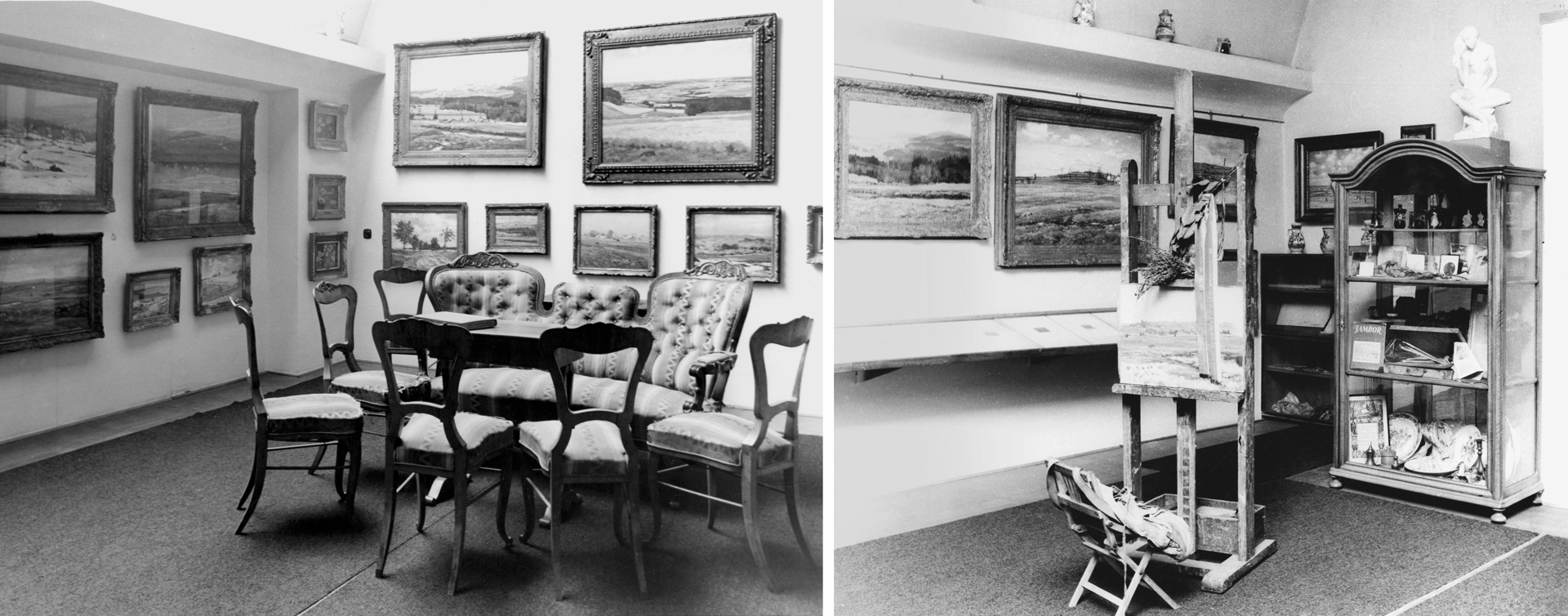
Josef Jambor’s studio at the time when it was open to the public with a permanent exhibition of his works, 1966; Archive of the Podhorácko Museum in Předklášteří, a branch of the Museum of the Brno Region
After Jambor’s death his studio at No. 475, Brněnská St. served as a showroom for the artist’s oeuvre and works by his friends from the Association of Moravian Artists, which the painter, and later his wife Božena, donated to the town of Tišnov as a gift to enrich its cultural heritage. At that time the studio was separated by a partition from the living quarters of the house, which, after Jambor’s death, belonged to Božena Jamborová. The opening of Jambor’s memorial under the name The Studio of Josef Jambor took place on 29 October 1966 on the anniversary of the artist’s birth. After the death of Božena Jamborová the town of Tišnov bought house No. 475 from her heirs and on 10 October 1973 this real estate was assigned to the town. On 1 April 1983, Jambor’s works, together with other art and personal items and historical furniture, were deposited in the Museum of the Podhorácko Region in Předklášteří. A permanent exhibition of Josef Jambor was opened there after the museum’s reconstruction. After the Velvet Revolution, the new town council with the mayor Petr Fruhwirt proposed that the house with Jambor’s studio be reconstructed and Jambor’s works returned to the newly opened Josef Jambor Gallery in the Jambor House in Tišnov. The gallery was used for the presentation of Jambor’s Bequest to the Town of Tišnov in co-existence with exhibitions of contemporary art. The gallery’s operation was taken care of by the Friends of Visual Arts Club in Tišnov and between 2009‒2011 by Art Periscope. The reconstruction of the house and extensions in the period from November 1995 to August 1996 was carried out by the Tišnov division of Subterra with its headquarters in Prague to plans drawn by Omega Studio Brno. In June 2005 the house was extended by the addition of a library adjoining the original building of the Jambor House with a common passage and a staircase and a similar facade on the outside. The latest reconstruction of the Jambor House in Tišnov, which took place from April to September 2017 to the design of architect Igor Ševčík from Pam Arch Brno, was completed by the Tišnov construction company of Karel Zemánek. The conversion of the building into a modern Josef Jambor Gallery showing contemporary visual art side by side with the permanent exhibition of Josef Jambor was initiated and supported by the town council chaired by the mayor Jiří Dospíšil.
Family Tree of the Painter Josef Jambor
Josef Peterka
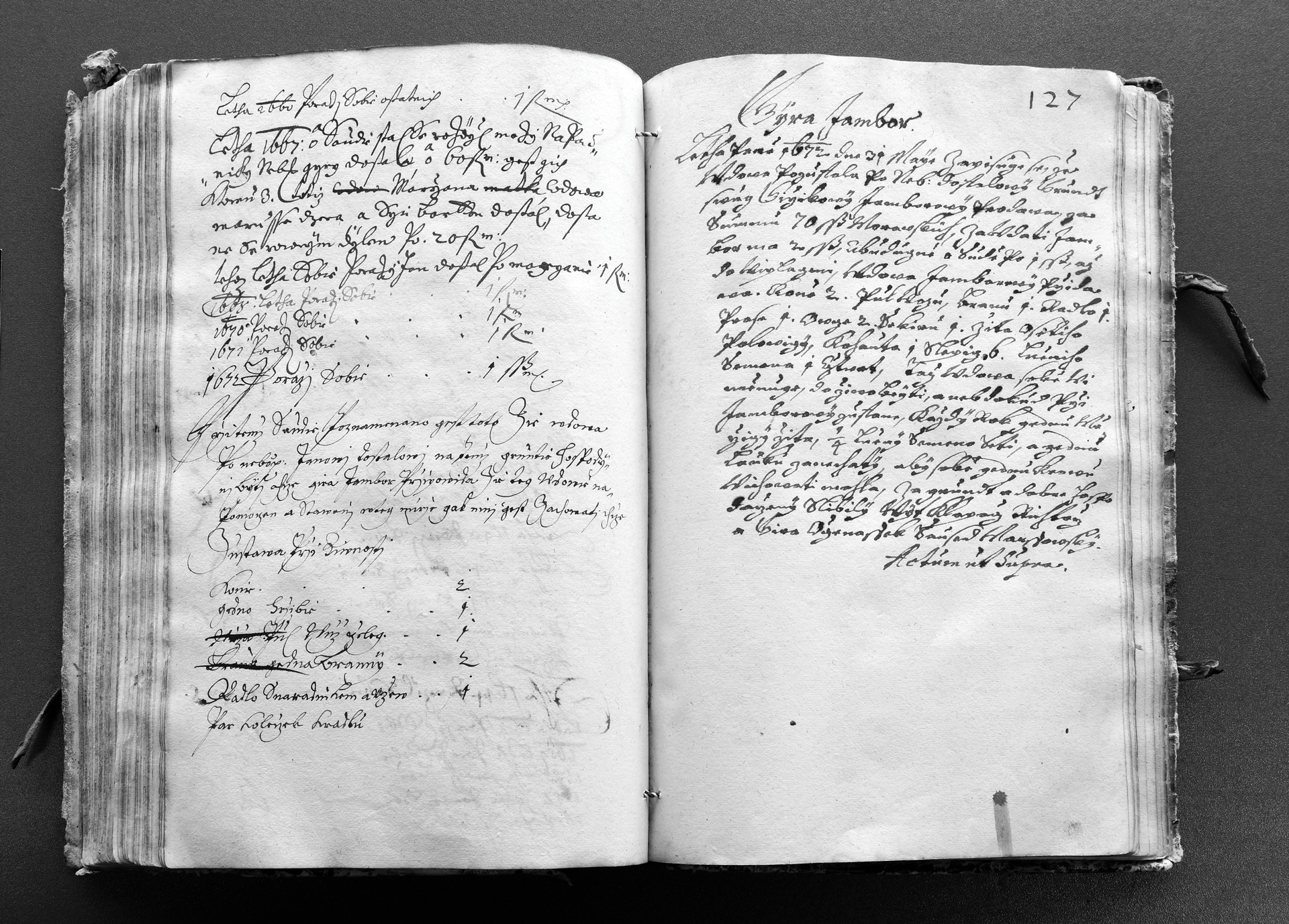
Record with the occurrence of the name Jambor. The earliest land register of Maršovice 1587‒1672; Moravian Provincial Archives Brno
The name Jambor appears quite early – in the Moravian land register dating from 1656‒1679. More than forty bearers of this name came in part from the Bohemian-Moravian Highlands and part from the Haná and Slovácko regions, from around Brno, Zábřeh na Moravě, etc. As far as the ancestors of the painter Josef Jambor are concerned, there is evidence of this name even from half a century earlier, in 1602, when a peasant from Maršovice stated in his last will that he owed “8 threescore to Jambor for a horse”.
However, the painter’s predecessors were originally called differently. The oldest confirmed ancestor, Vavřinec Karásků, bought an estate in Maršovice as early as 1587. Vavřinec died in 1593 and left behind a widow Kuna (Kunhuta) with seven children: Jan, Kateřina, Anna, Dorota, Jiří, Petr and Václav. Jan and Václav are called Vavřinců in the estate records, after the Christian name of the father. Changes of name were quite common at that time. A record from 1602 with probably the first occurrence of the name Jambor may be associated with the oldest Jan, who took over the estate worth 100 threescore from the father and worked there until 1625. From records in the Maršovice estate book the name Jambor begins to occur more frequently in the family starting from this date. In 1654 the heirship from the father Jan was sold by Matěj, son of Jan Jambor (probably the first member of the family with this name). Similarly, in 1678 the widow of Václav Vavřinec died as Lidmila Jamborka. Her son, Jiří Jambor, finally sold the family-owned land and in the same year, 1672, bought more. In the same year the records in the Maršovice estate register end and further data on the family of Josef Jambor can be drawn solely from the parish registers where the successors of the Jambor family appear exclusively under this name. As the family tree branched out we will only follow the main family line related to the painter.
In 1690, the son of Jiří Jambor, of the same name, married Anna, the daughter of Václav Štula from Maršovice. They gave birth to the children Josef, Fabián, Kateřina, Johana and probably Jan. They lived in Maršovice and Jiří junior died there in 1707 aged 35 years. The painter’s line continues with Josef Jambor (*1691 Maršovice ‒†1751 Pohledec), who in 1723 married Johana, the widow of Jan Žák from Pohledec. Having no farm of his own, his son of the same name was born in Fryšava at the manorial estate where he worked. In 1756, Josef Jambor Jr. (*1726 Fryšava‒†1787 Maršovice) married Anna Pejchalová from Pohledec (†1795 Maršovice). During his lifetime the houses were given numbers for the first time (1771, his house received No. 13) and the Patent of Toleration was issued (1781), which Josef Jambor took advantage of and declared his family to be followers of the Helvetic Confession. He had 10 children, from which we will follow the line of the son Matěj. In 1798, Matěj Jambor (*1767 Maršovice‒†1811 Pohledec) married Mariana Popelková from Maršovice. They had the son Josef (*1801 Maršovice‒ †1876 Pohledec), who in 1828 wed Johana Růžičková from Zubří (†1853 Pohledec) and at the same time house No. 8 in Pohledec was assigned to him. Their son, called again Josef (*1834 Pohledec‒†1909 Pohledec), had a child with Anna Kozlová from Německé (today Sněžné), the son being called Josef (*1856 Německé). The wedding did not take place until 1862, as the mother was a Catholic and resisted converting to the Evangelical Church. At the wedding the newlyweds received a gift from bridegroom’s father – the above mentioned house No. 8 in Pohledec. In 1880, the son Josef married Eleonora Šabartová from Studnice. They had twelve children of whom seven died at an early age. In 1880 the married couple bought house No. 26 in Pohledec for 625 gulden. It was there that the painter Josef Jambor was born in 1887. When he was eight his birthplace, house No. 26 in Pohledec, was sold by his parents Eleonora and Josef Jambor in 1895 to Josef Kozák. From then on, they moved each year until they settled in Brno where we have evidence of their residence in 1908. On the occasion of the celebrations of the six-hundredth anniversary of the founding of Pohledec, a memorial plate to the painter Josef Jambor by the sculptor Nikos Armutidis was unveiled on 26 September 2009 on the façade of his birthplace – house No. 26 in Pohledec.

Graphic representation of Jambor family tree; design by Pavel Coufalík
Josef Jambor and Tišnov
Jan Lacina
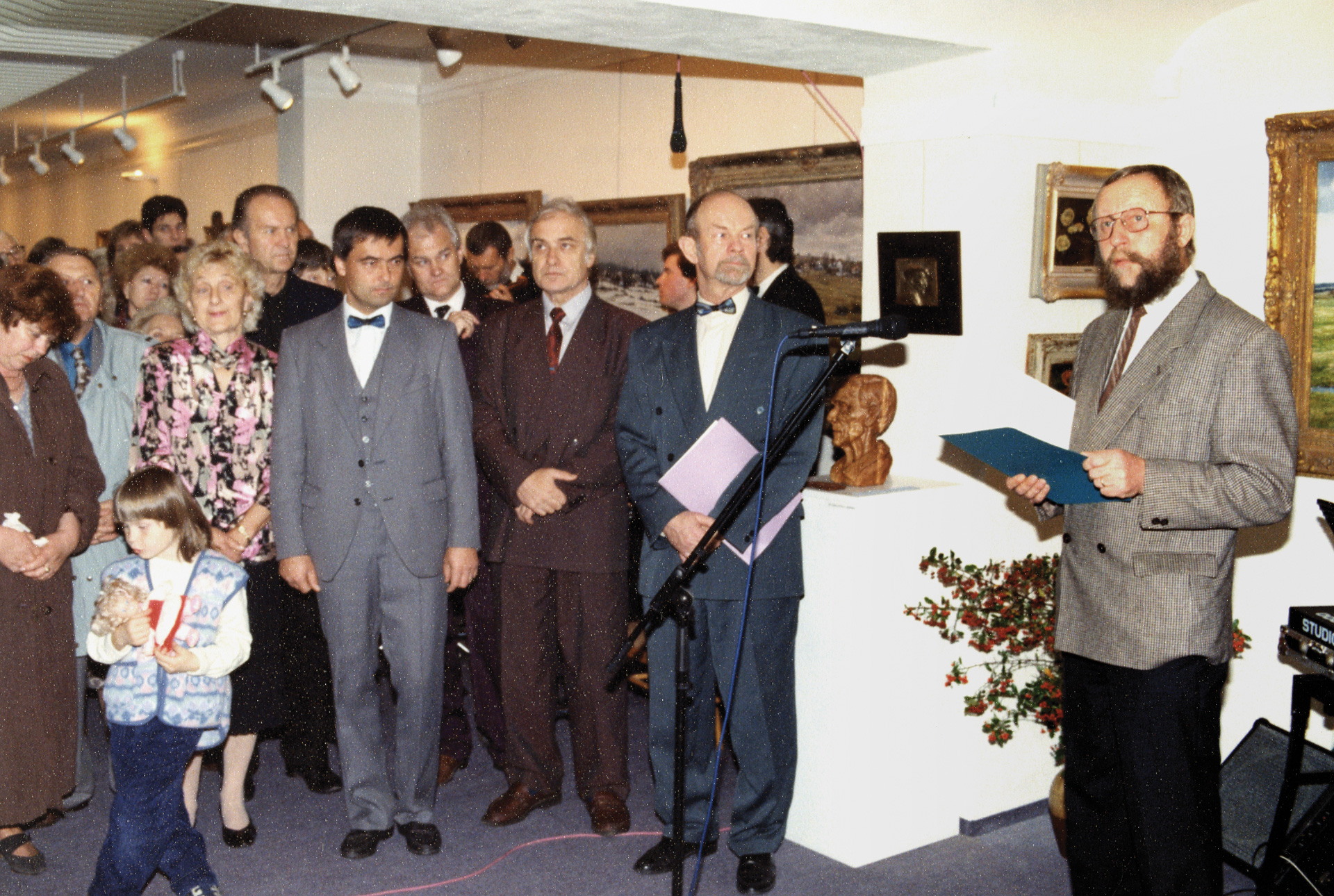
Jan Lacina’s speech at the official opening of the Jambor House in presence of Petr Fruhwirt, Mayor of the town of Tišnov, on 9 November, 1996; Archive of the Podhorácko Museum in Předklášteří, a branch of the Museum of the Brno Region
Josef Jambor married his wife in Tišnov only in 1931, yet his close relationship to this town and its surroundings at the border of his native Vysočina was of much earlier date. He met his second wife Božena Chlupová, a milliner form Tišnov, at the Podhorácko Exhibition in Tišnov in the summer of 1927. The exhibition included artworks and Josef Jambor exhibited there together with sculptor Jan Štursa, painters Václav Jícha, Otakar Kubín, Jaroslav Král, Antonín Procházka, etc. It is worth mentioning that Jambor showed in Tišnov mainly his landscape paintings from the Nové Město area and the Netherlands, although he was painting in the town’s immediate surroundings at the time, and even much earlier. It is notable that the earliest work ever found in Jambor's exhibition catalogues is a picture of Hradčany near Tišnov from 1907. In the later years, he would come back to painting vistas of Hradčany from the Svratka River floodplain at Tišnov in various seasons of the year – see for instance the paintings View across the Svratka River at Tišnov to Horky near Hradčany (1941), Thaw (1941), among others. The former painting shows the long-gone small river islands in the Svratka River area called “Gráda”, the latter documents that the Svratka River floodplain used to be mostly grassed, with no fields.
Svratka riverine landscape near Tišnov became the subject of many other Jambor’s paintings. For example his oil paintings At the Svratka River (1943) and Svratka at the confluence with Besének Stream (1947) were made in the area of the confluence of Besének with Svratka under the Květnice Hill. More upstream, he would paint Svratka under the Village of Borač (1946), a painting now installed in the ceremonial hall of Tišnov Town Hall. On the other hand, the Svratka River downstream of Tišnov is depicted in the paintings Svratka below Květnice Hill (1947), Grado on the Svratka in Winter (1957) and Near Březina on the Svratka (1957).
Repeatedly, Jambor devoted himself to painting the town itself and its parts. Tišnov in Winter (1929) is an idyllic snowy view (unfamiliar now for years) from the old railroad “Tišnovka” below Humpolka. Tišnov with Květnice Hill (1935), a vista taken from Hrádek across the blooming fruit orchards under the church, while another Tišnov with Květnice, named simply Květnice (1950), was painted in the flowery meadows in the Svratka floodplain below the town. The ancient town environment is documented for instance in the paintings Fountain in Tišnov, Evening (1931), the Market in Tišnov (1932), rich in human figures, and the old-time Red Mill (1941), now gone without any traces left.
Journey to the Sites of Jambor's Landscapes in Nové Město na Moravě Area
10 November, 2018
In the company of Jan Lacina, Associate Professor in landscape-ecological research, and shrouded in horizons of autumn mist, we stepped into the paintings of painter Josef Jambor on the sites identified by Lacina during more than twenty years of his research.
